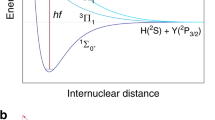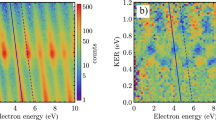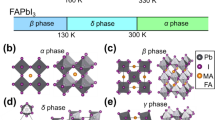Abstract
ESTIMATES of polarization and related constants of the four hydrogen halides1 appear to reveal certain peculiar, though simple relations. If a is the mean optical polarizability of a halide HX, b1 b2 respectively that along and perpendicular to the internuclear axis of symmetry S re the equilibrium internuclear distance of HX, and a(X) the polarisability of the negative ion X, I find that (1) a = l·242re3 2,3 and, further, if (2) b1 oc re3, then since 3a = b1+2b2, (2a) b2 oc re3, (2b) b1 oc b2, and (2c) b1 = a(X) (Born and Heisenberg4).
This is a preview of subscription content, access via your institution
Access options
Subscribe to this journal
Receive 51 print issues and online access
$199.00 per year
only $3.90 per issue
Buy this article
- Purchase on SpringerLink
- Instant access to full article PDF
Prices may be subject to local taxes which are calculated during checkout
Similar content being viewed by others
Change history
01 August 1936
An Erratum to this paper has been published: https://doi.org/10.1038/138169c0
References
C. H. Douglas Clark, Trans. Faraday Soc., 31, 585 (1935). (where a=present a).
Clark, Phil. Mag., (vii.), 19, 476 (1935).
Clark, Proc. Leeds Phil. Soc., 3, 208 (1936).
M. Born and W. Heisenberg, Z. Phys., 23, 388 (1924).
H. A. Stuart, Z. Phys., 55, 358 (1929).
Author information
Authors and Affiliations
Rights and permissions
About this article
Cite this article
DOUGLAS CLARK, C. Optical Polarization Ellipsoids of the Hydrogen Halide Gases. Nature 138, 126 (1936). https://doi.org/10.1038/138126a0
Issue date:
DOI: https://doi.org/10.1038/138126a0



